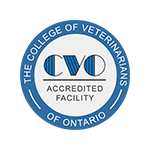Educational Articles
-
The West Nile Virus (WNV) is transmitted by the bite of a mosquito (primarily Culex species) that is infected with the virus. Birds are both susceptible to the virus and can act as a host, though indigenous birds such as owls, hawks, eagles, crows, and jays appear to be most at risk in comparison to pet birds. There is no specific treatment once a bird is infected so prevention is of high importance.
-
Compounded medications are not approved by federal authorities. They are medications that have been altered to provide more accurate dosing or easier administration. They have not been tested for safety, stability, potency, or efficacy.
-
Running a veterinary clinic has a lot of overhead and behind the scenes cost that many pet owners aren't aware of. Human healthcare is far more expensive and less efficient than you realize. Plan ahead and take preventive steps to help reduce treating costly problems.
-
During the spring and summer, it is not unusual to encounter a wild baby bird on the ground. Often, people respond by taking the little "orphan" home before they figure out what to do with it. This handout provides important information should you encounter a wild baby bird.
-
The purpose of clipping a bird's wings is not to prevent flight completely, but to ensure the bird is unable to achieve or sustain upward flight, preventing escape, unwanted roaming, and exposure to dangerous situations. Typically, the primary feathers are trimmed about halfway between the base and the tip of the feather. The secondary feathers should not be clipped, and no feathers should be clipped shorter than midway from base to tip. Newly growing pin or blood feathers (that retain blood in the shaft until the feather matures) will bleed quite profusely if accidentally cut.




